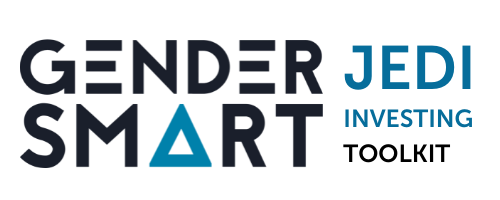Here’s how organizations can put intersectionality to work
Article about building intersectionality into recruitment strategies, making sure people have opportunities to discuss these issues, and an open and empathic style of leadership.
How to reduce bias in your workplace | The Way We Work, a TED series
3 ways to reduce bias at work, according to Just Work co-founders, author Kim Scott and CEO Trier Bryant. (Video)
Resources: Allocating Budget, People and Time
From Inclusion in Tech: There is no ‘one-size fits all’ solution, but don’t worry! There will be resource requirements and business impact on the company when you launch your strategy. By identifying who and what will be required from the start, you can plan for any additional resources, reduce risk and create tangible timelines.
Decolonizing Diversity, Equity, and Inclusion: …Means Naming White Supremacy Culture
Traverses the role of organisational culture and shifts needed to dismantle patriarchal and white supremacist culture and organisational behaviours.
The Bias of ‘Professionalism’ Standards
Professionalism has become coded language for white favoritism in workplace practices that more often than not privilege the values of white and Western employees and leave behind people of color.
Being Antiracist
To create an equal society, we must commit to making unbiased choices and being antiracist in all aspects of our lives.
Is unconscious bias training still worthwhile?
Training can raise people’s awareness of their unconscious biases, but evidence shows that training alone is not effective in changing behaviour. The UK government has already decided to discontinue this kind of programme in its various departments. Frederick Herbert writes that while it is generally accepted that awareness is not a sufficient condition for behavioural change, it is usually necessary. He argues that unconscious bias training can be re-thought of as a foundation upon which other interventions can build.
Minimizing and addressing implicit bias in the workplace
By Shamika Dalton and Michele Villagran: Awareness of our implicit biases, and how they can affect our colleagues and work environment, is critical to promoting an inclusive work environment. Part one of this two-part article series will focus on implicit bias: what is implicit bias, how these biases affect the work environment, and best practices for reducing these biases within recruitment, hiring, and retention in the library workplace.
Breaking barriers: Unconscious gender bias in the workplace
This research note provides a review of unconscious gender bias and its role in impeding women’s career advancement before discussing how to mitigate and overcome unconscious gender bias in the workplace.
Intersectionality in Organizations: Why ‘Bringing Your Whole Self to Work’ is Not Sufficient
Today’s context, a historical understanding, and examples from the real world all have a role to play in understanding how to meaningfully prioritize people with multiple identities.
Project Implicit
Non-profit organization and international, collaborative network of researchers investigating implicit social cognition, or thoughts and feelings that are largely outside of conscious awareness and control.
7 ways companies are advancing racial justice in business
Over the past year, the pressure for companies to act on racial equality has increased. In response, they have started to focus on seven key actions to increase diversity, equity and inclusion (DE&I). These include hiring for DE&I roles and providing anti-bias trainings.
Racial Justice Resources
This resource page, compiled with input from US SIF’s Racial Justice Task Force, provides information on investing to advance racial justice, organizations working on racial justice and resources on embedding racial equity in the workplace.
Guidance and best practice examples for VCs, private equity and institutional investors
This document has been created by leading investors and professionals within the venture community as a resource for institutional and other investors who, through diversity and inclusion, wish to maximise access to diverse deal flow, and manage their companies and portfolios to optimise return.
How to Measure Inclusion in the Workplace
From Harvard Business Review: In an era where companies are paying more and more attention to diversity, equity, and inclusion (DEI), inclusion remains the most difficult metric to track. From new research, Gartner developed the Gartner Inclusion Index to measure what true inclusion looks like across an organization. The authors outline how to use the Gartner Inclusion Index to measure employee perceptions of inclusion, what effective action looks like from leaders, and common pitfalls to avoid.
Meyer's DEI Spectrum Tool
The Diversity, Equity and Inclusion (DEI) Spectrum Tool was created to help organizations assess where they are on their DEI journey and to identify potential areas for future work. It is also intended to provide shared language to help Meyer staff and nonprofits talk together about what DEI currently looks like in an applicant's organization and opportunities for growth.
Anti-Racist Organisational Assessment Rubric
From the National Juvenile Justice Network, this rubric supports those organisations committed to engaging in self-analyses to reflect on how their organisation can better undo the systemic racism in society.
Sample Diversity and Representation Survey for Internal Staff
From Impact Assets: This sample survey was created by ImpactAssets for understanding the diversity and representation of their team, Investment Committee, and Board of Directors.
The Role of Investment Managers in Promoting Diversity and Inclusion
Short document from the Investment Association summarising recent industry work in a number of proactive initiatives to further advance diversity and inclusion in all its forms.
Racial Equity Action Plans: A How-to Manual
Racial Equity Plans are both a process and a product. A successful process will build staff capacity which can be valuable during implementation. A process can also serve to familiarize more staff with the jurisdiction’s racial equity vision and its theory of change. This manual from GARE provides guidance for local governments to develop their own Racial Equity Action Plans after a period of research and information gathering. This manual also provides guidance and tools to conduct this research.

